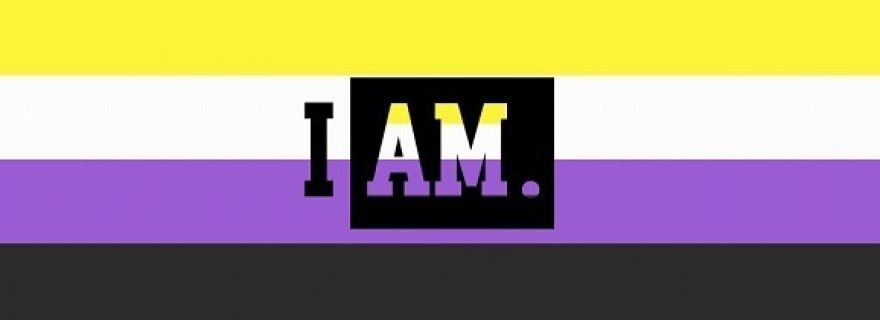Call Me By My Name
We don’t often question given names or pronouns. Yet for transgender people, this can cause major distress. Through the viewpoint of Sam, this is a glimpse into what misgendering or misnaming them can do to a non-binary transgender person.
Names, in the broadest sense of the word, are one of those things we take for granted. You get one from you parents and in most cases you carry it for the rest of your life. Perhaps you like your name, or maybe you don’t feel any particular connection to it. It is just one of those things. Why wonder why a “shoe” is called a “shoe” if at the end of the day you need to wear it anyway? It takes energy and effort to process the entire etymology of the object and in the end it does not change much.
Yet names are integral to our self-perception. They are the core around which we construct our identity. What is a “Lars”? Lars is a boy. Lars is quiet and reserved, he always thinks carefully before speaking. Lars has a knack for arts. He’s not so good at maths, but that’s okay because Lars wants to become a comic book author. It’s his dream. And he reads novels and comics to tirelessly refine his own style. Tell his friends or family “Lars” and they will visualise this person. His name carries weight. It carries attachment to, and memories of the boy. But there is something about the “boy” that no one can quite put their finger on. What they do not know is that “Lars” is just a mask. The person behind it has retreated into the description of him that his friends and family know so well. Because the person behind it has seen what his peers do to those who are different. They are mocked, bullied, and ostracised. But without anyone to see behind the mask, it is lonely.
Everyone has, at one point or another, had to hide something from the others. Whether out of fear for being laughed at, or for fear of being ostracised, or prosecuted, everyone has had to hide parts of themselves. If you have ever hidden anything, you know it costs a lot of energy. But with “Lars” the mask became a fortress of inoffensiveness. He could not keep this up. Eventually “Lars” could not see behind his own mask anymore – he had no idea who he was. He cracked and slipped into depression. After a decade of darkness, and a long search to find help, “Lars” started breaking down the castle of normativity he had built. And behind the walls was a non-binary person – neither man nor woman. “Lars” disappeared and Sam was born from the rubble. Sam could now start the road to recovery. But there was one more thing in the way; “Lars.”
“Lars” was the bullies, “Lars” was the loneliness, the expectations Sam could not meet, and “Lars” was the man that they did not want to be. “Lars” was all the times Sam had been standing in the kitchen with their eyes glued to the knives on the counter. “Lars” was the central pillar of the fortress Sam had built. And therefore it had to come down.
And suddenly it is important to question names. Because if you were to call Sam “Lars” they would be confronted with the darkness that is attached to their name. But that is not the most important thing. If you were to call them “Lars,” they would feel as though their identity, as though they themself is invalid. It validates rebuilding the mask – hiding their true self – as the only way of expression. It erases the progress they have made towards becoming themselves. The pain of being made undone by people, by accident or on purpose, is difficult to describe. But try to imagine your favourite part about yourself being denied to you. Imagine, like Sam, you are an artist. And imagine people consistently telling you that you need to stop dreaming, that your art style does not follow the conventions to be accepted by any publisher, and that no one is going to buy it from you because it is just too weird.
This is why it is important to name people as they want to be. To respect them for who they are, for who they have decided to be. And little things go a long way towards this goal too. Real-life Sam has recently found that through changing their preferred name in Studielink, their name will be taken into other systems such as uSIS and Brightspace. They have found out that both in MS Teams and Outlook, Leiden University is working on adapting names as well. And it made them feel supported. It made them feel like they are allowed to take up the space they do, even if they are different. Because there are people who see that diversity is a strength, not a weakness to be bullied back into line.
- To add a preferred name (or "roepnaam") in Studielink, go to the tab with your first and last name ("gegevens") in Studielink. For general questions about Studielink, you can contact the Student Affairs Front Office.
- The LGBT+ Network offers a platform for all lesbian, gay, bisexual, transgender and queer staff and students at Leiden University.
- Leiden Pride is a non-profit foundation hosting inclusive events of all kinds for the LGBTQI+ community in and around Leiden.
- Contact and registration forms are often gendered. Ask yourself: is it really necessary? If so, including the following categories might be helpful: male/female/non-binary/other, namely.../don’t want to say. Also check out the Dutch Toolkit onnodige sekseregistratie from Kennisinstituut Atria and Transgender Netwerk Nederland.


0 Comments